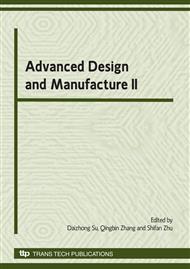p.1
p.5
p.9
p.13
p.17
p.21
p.25
p.29
Early-Age Autogenous Shrinkage of High-Performance Concrete Columns by Embedded Fiber Bragg-Grating Sensor
Abstract:
High-performance concrete (HPC) as a promising construction material has been widely used in infrastructures and high-rise buildings etc. However, its pretty high autogenous shrinkage (AS) especially in its early age becomes one of the key problems endangering long-time durability of HPC structures. This paper carried out the early age AS research of large scaled HPC column specimens by embedded Fiber Bragg-Grating (FBG) strain sensor. Temperature compensation for FBG strain sensor by thermocouple was also attempted in this paper, and the results were reasonable and acceptable comparing with the result compensated by FBG temperature sensor. Reinforcement influence, size effect and temperature effect on HPC AS were also analyzed respectively in this paper.
Info:
Periodical:
Pages:
1-4
Citation:
Online since:
October 2009
Authors:
Price:
Сopyright:
© 2010 Trans Tech Publications Ltd. All Rights Reserved
Share:
Citation:


